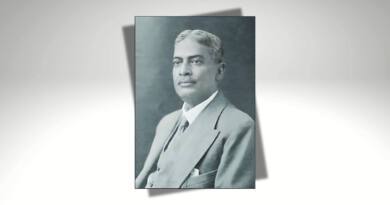Know The Amazing History Of Indians In The USA.
Since the late nineteenth and early twentieth centuries, there has been an extensive and intricate history of the Indian diaspora living in the United States.
WFY BURAEU USA: Desire for better educational and economic opportunities drove the initial wave of Indian immigration to the United States.
The first large wave of Indian immigration to the United States occurred in the late 1800s, fueled mostly by a desire for education. Many young Indian men went to the United States to study at universities and colleges, where they learned essential skills that they eventually brought back to India. One of the most well-known examples of this early wave of immigration is Bhagat Singh Thind, who came to the United States in 1913 to seek a degree in agriculture. Thind went on to become a well-known spiritual teacher and author, and his work is still studied and loved today.
In the early twentieth century, Indian immigrants began to play a larger role in American society, working in a variety of jobs, including menial labour and professional positions. Many Indian immigrants worked in agriculture, particularly in the West Coast regions, where they were hired as farm labourers and field workers. Others worked in factories and mills as mechanics or engineers. Many Indian immigrants pursued further education and professional professions after settling in the United States, eventually becoming doctors, scientists, and engineers.
S.R. Ranganathan, one of the most renowned representatives of this second wave of Indian immigration, moved to the United States in 1920 to seek a degree in library science. Ranganathan went on to become a well-known librarian and information scientist, and his contributions had a significant impact on the advancement of library science in India and around the world.
The number of Indian immigrants to the United States increased significantly during the 1960s, when the US government reduced immigration limits and permitted more qualified workers to enter the nation. This wave of immigration was predominantly made up of highly educated professionals and their families, who have since played a major part in the growth and development of the Indian-American community.
Today, the Indian-American community is one of the fastest-growing and wealthiest ethnic groups in the United States, having a strong presence in many major cities nationwide. Indian-Americans have contributed significantly to American civilization in a wide range of disciplines, including business, science, technology, and the arts.
Sundar Pichai, Google’s CEO, is one of the most renowned examples of this, having immigrated to the United States in 2004 to obtain a PhD in engineering. Pichai went on to become one of the most powerful leaders in the technology industry, contributing to the growth and development of Google and numerous other technological firms.
The tale of the Indian diaspora in the United States begins with hard labour, determination, and a desire to improve the lives of themselves and their families. Despite numerous hurdles, Indian-Americans have persevered and emerged as a viable and significant element of American society.
The 2020 Indian American Attitudes Survey results provide insight into the social realities of Indian Americans.
The 2020 Indian American Attitudes Survey sheds light on Indian Americans’ social realities in the United States, revealing factors such as community diversity, religious practices, caste identity, political engagement, social networks, polarisation, and discriminatory experiences. It also investigates the differences within the Indian American community and their impact on US-India relations.
Key Points
- The Indian American community is diverse, consisting of both new immigrants and long-term inhabitants.
- Religion is important in the lives of Indian Americans, but their practice differs.
- Caste prejudice affects both Indians and non-Indians, with approximately half of Hindu Indian Americans identifying with a specific caste group.
- Indian Americans have a high rate of marriage within their community.
- Levels of civic and political engagement differ by citizenship status.
- Indian Americans’ social networks predominantly consist of people of Indian descent, with religious homogeneity.
- The community faces prejudice based on skin colour and political divides.
The 2020 Indian American Attitudes Survey offers a thorough overview of the Indian American community in the United States. It illustrates the community’s diversity, which includes both new immigrants and people who have lived in the United States for a long time. This diversity enriches the community’s experiences and perspectives.
Religion is significant in the lives of Indian Americans, yet the extent of religious activity varies by individual. The survey finds that a sizable proportion of Hindu Indian Americans identify with a distinct caste group, demonstrating the existence of caste identity in the diaspora. Caste prejudice is not only acknowledged within the community but also as a shared obligation by Indians and non-Indians.
The poll also emphasises the high rate of intra-community marriages among Indian Americans. A large proportion of Indian Americans marry within their own group, demonstrating a desire to maintain cultural and social ties.
Indian Americans’ civic and political engagement levels differ according to their citizenship status. While citizens are more engaged, noncitizens and naturalised citizens are also actively interested. This involvement takes the form of political contributions, campaign volunteering, and participation in community organisations.
Indian Americans’ social networks are predominantly made up of fellow Indians, demonstrating a preference for socialising within their own community. Furthermore, these networks are religiously homogeneous, indicating that religious affiliation is important in shaping social interactions.
The poll shows instances of discrimination against Indian Americans, notably based on their skin colour. This discrimination is a major issue for Indian Americans in many areas of their lives, including education, work, and interactions with law enforcement.
Furthermore, the survey reveals differences within the Indian American community about Indian politics. These divisions can have an impact on the community’s collective actions and activism, as well as the overall US-India relationship.
To summarise, the 2020 Indian American Attitudes Survey provides important insights into the social reality of Indian Americans in the United States. It delves into themes like diversity, religion, caste identification, marriage patterns, civic involvement, social networks, discrimination, and political differences, offering insight on the diverse makeup of this lively community.




